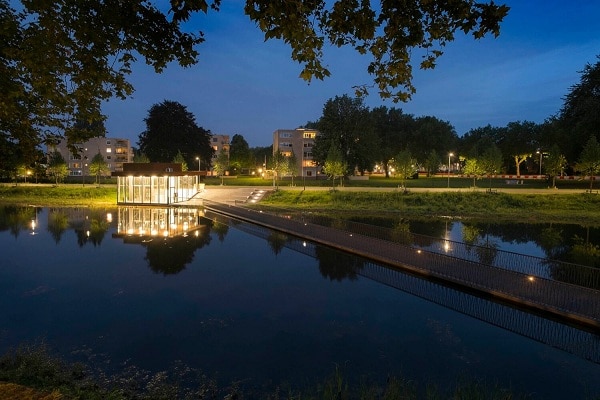When it comes to smart lighting, people may think of switching the luminosity and color of the light at any time according to different scenarios to meet the different needs of users.
Nowadays, the application of intelligent lighting is extended further, and the light rhythm can be controlled according to the biological rhythm of the human body, the response curve of the light environment, and the demand effect of different scenes.
In recent years, driven by technologies such as big data, artificial intelligence, and the Internet of things, From traditional lighting based on tungsten filament lamps and gas discharge lamps in the past to LED lighting based on semiconductor devices, it has gradually entered an era of intelligent lighting based on the Internet of things.
So entering the smart lighting market will be an inevitable trend for the development of traditional lighting companies?
Industry veterans said that the current development prospects of the smart lighting market are very imaginative. However, the process requires product iteration and market education, active understanding, and smart products that meet customer needs, rather than voice-controlled pseudo-smart products.
Smart lighting products are a good trend, but not an inevitable development trend of the traditional lighting industry. Because the field of lighting is very large, different companies combine their own conditions to choose suitable market segments, which is also a better development idea.
At present, smart lighting products are mainly distributed in four major areas: industrial and commercial, residential and household, outdoor lighting, and public lighting. Many of the current smart lighting products are transitional products. For individual users, many products on the market are not very friendly in terms of selection, installation, network distribution, and use. Smart lighting products can really explode if the product can actively understand customer needs and is easy to install and use.
When it comes to smart lighting, people may think of switching the luminosity and color of the light at any time according to different scenarios to meet the different needs of users.
Nowadays, the application of intelligent lighting is extended further, and the light rhythm can be controlled according to the biological rhythm of the human body, the response curve of the light environment, and the demand effect of different scenes.

In recent years, driven by technologies such as big data, artificial intelligence, and the Internet of things, From traditional lighting based on tungsten filament lamps and gas discharge lamps in the past to LED lighting based on semiconductor devices, it has gradually entered an era of intelligent lighting based on the Internet of things. So entering the smart lighting market will be an inevitable trend for the development of traditional lighting companies? Industry veterans said that the current development prospects of the smart lighting market are very imaginative. However, the process requires product iteration and market education, active understanding, and smart products that meet customer needs, rather than voice-controlled pseudo-smart products. Smart lighting products are a good trend, but not an inevitable development trend of the traditional lighting industry. Because the field of lighting is very large, different companies combine their own conditions to choose suitable market segments, which is also a better development idea.

At present, smart lighting products are mainly distributed in four major areas: industrial and commercial, residential and household, outdoor lighting, and public lighting. Many of the current smart lighting products are transitional products. For individual users, many products on the market are not very friendly in terms of selection, installation, network distribution, and use. Smart lighting products can really explode if the product can actively understand customer needs and is easy to install and use.
